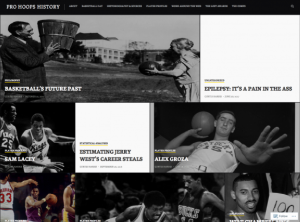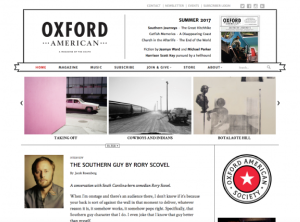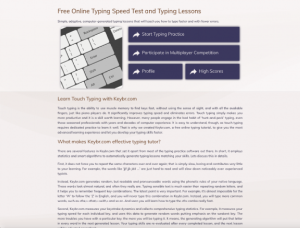Research and Education
Back to Top
|
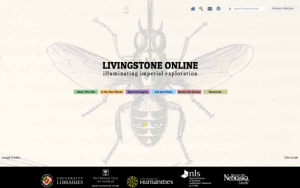 |
|
Livingstone Online
|
Social studies |
|
Livingstone Online is a digital museum and library dedicated to the British missionary and explorer David Livingstone. Launched in 2004, the project is an ongoing international collaboration between distinguished scholars and institutions, made possible with funding from the National Endowment for the Humanities. This extensive and skillfully designed website includes no fewer than 15,000 digitized images and 7,000 digitized transcripts, along with critical essays. The result is a website that tells the story of Livingstone's life while illuminating realities about British imperialism, African colonialism, and Victorian medicine, among other topics. Visitors less familiar with the story of David Livingstone may want to start with the Life and Times section, which features detailed essays accompanied by select primary documents. Visitors may also explore the extensive manuscript collection in the In His Own Words section, which includes the explorer's famous 1857 manuscript, Missionary Travels and Researches in South Africa, along with diaries, maps, and letters. Recently added to this collection are Livingstone's 1870 and 1871 Field Dairies, the later made available thanks to spectral imaging technology. [MMB] |
|





|
|
 |
|
 |
|
SFMOMA: Teacher Resources
|
Arts |
|
The San Francisco Museum of Modern Art (SFMOMA) offers this collection of 100 educational resources for K-12 teachers. Many of these resources may also be of interest to youth librarians and teachers in out of school contexts. This collection can be browsed by grade level, subject area, or theme (e.g. Power, Community, or Narrative Process). One highlight of this collection is the Open Studio series, which features classroom activities suggested by contemporary artists. Some of these activities are accompanied by short videos featuring the artist. Another highlight is a series of printable artist guides, which feature short readings and photographs of artwork by a famous artist, accompanied by activities for students to complete. Featured artists include Frida Kahlo, Georgia O'Keeffe, and Louise Bourgeois. This collection also offers a series of discussion guides designed to engage learners of all ages with a variety of work found in SFMOMA. Finally, younger learners may be drawn to the playful Country Dog Gentlemen video series, which follows dogs from Roy De Forest's painting by the same name as they learn about various artists. [MMB] |
|





|
|
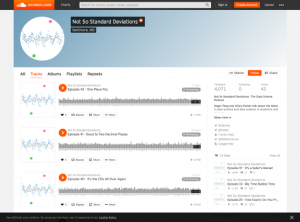 |
|
 |
|
Library of Congress: Sigmund Freud Papers
|
Social studies |
|
The Library of Congress is home to this extensive collection of materials relating to Sigmund Freud, thanks in large part to the efforts of the Sigmund Freud Archives, a New York-based organization, founded by a team of psychologists in 1951 and committed to collecting items about the founder of psychoanalysis. This collection, numbering over 50,000 items in total, consists of personal correspondence by Freud and also includes university records, interviews, and more. As of this write-up, approximately 2,000 of these items have been digitized for visitors from around the world to view. Visitors may browse these items by date or by collection (e.g. General Correspondence; Interviews and Recollections; and Oversized). This items, which include papers in both English and German, will also serve as a valuable resource for those studying philosophy, history, or psychology. [MMB] |
|





|
|
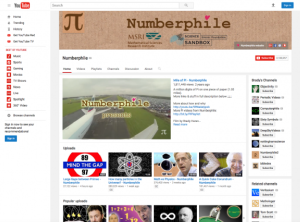 |
|
YouTube: Numberphile
|
Mathematics |
|
This YouTube channel, courtesy of the Mathematical Sciences Research Institute and the Simons Foundation Science Sandbox, describes its offerings as "videos about numbers - it's that simple." These videos come from Brady Haran, who also produced the popular Periodic Table of Videos series (see the 03-27-2009 Scout Report). Each episode of Numberphile varies in length, between just over a minute to about fifteen minutes, and includes quick brain teasers, hands on demonstrations, interviews, and short lessons. Videos also frequently feature guest scholars. Recent videos include an exploration of the links between the fields of mathematics and physics; an explanation of Godel's Incompleteness Theorem by Professor Marcus du Sautoy of the University of Oxford; and a brainteaser about how to fairly slice a cake. Some videos are organized into playlists for easy browsing, including Prime Numbers, Dice, and Fermat's Last Theorem. [MMB] |
|





|
|
 |
|
The Programing Historian
|
Social studies |
|
For scholars of History, along with individuals in other disciplines interested in Digital Humanities, the Programming Historian offers "novice-friendly, peer-reviewed tutorials that help humanists learn a wide range of digital tools, techniques, and workflows to facilitate their research." As of this write-up, the Programming Historian contains over 60 tutorials, organized into units, or "series," including Data Management, Data Manipulation, Mapping and GIS, and Digital Exhibits and Augmented Reality. Each lesson includes step-by-step instructions along with explanations of vocabulary terms and helpful visuals. Each tutorial is designed specifically for historians, with sample tasks and datasets centering on historical research. Visitors experienced in the digital humanities are invited to contribute their own lessons, while all visitors are invited to provide feedback or ask questions on the project's Github page. The Programming Historian is available in both English and Spanish. [MMB] |
|





|
|











